A Mixed Bouquet
In recent years, garden centers have become increasingly diverse, offering more than plants and plant care supplies. Product lines include gifts, food, furniture, perhaps even pet-care accessories. Oddly enough, though, cut flowers don’t often seem to make the cut, unless the garden center is also home to a full-service florist. Even then, there are unique marketing challenges, beyond the need for specialized care and handling requirements, to maintain high-quality fresh flowers and generate crossover sales.
Challenges and Possibilities
John Dole, floriculture professor at North Carolina State University and leading expert in the cut flower industry, observes, “The cut flower industry and the garden center industry are different enough that a combined effort becomes two businesses in one with some overlap, but not enough to create much synergy.” For garden centers wanting to explore the cut flower market but not venture into a florist business, Dole says a display stand or cooler, like those found in the mass market, with mixed bouquets may fare well. He’s also had an inquiry for a garden center interested in creating a farmers’ markettype display in their parking lot featuring locally grown flowers to keep customers coming in once the spring rush has passed, creating a mutually beneficial arrangement.
Don Harvey of Harvey Floral in Adel, Iowa, and Karen Pendleton of Pendleton’s Country Market in Lawrence, Kan., are garden center owners and cut flower growers, each with six acres of field production. Harvey laments that “the cut flowers are at their peak in July and August, when traffic into the garden center is light.” While he offers fresh mixed bouquets in the garden center daily, more than 90 percent of his sales result from florist and farmers’ market customers. Pendleton concurs, adding, “many of our garden center customers grow their own cutting gardens.”
While Pendleton also depends on the local farmers’ market to sell the majority of her cut flowers as mixed bouquets, grower bunches and single stems, she also dabbles in floral service and design work for weddings and special events. She’s noticed an increased interest in locally grown flowers, an extension of the local foods movement. The custom work accounts for about 20 percent of her flower volume and 50 percent of her flower sales. With at least one wedding every weekend from May to November, it requires careful planning to manage the busy garden center season with design and delivery commitments.
Garden Center and Florists Combos
There are quite a number of garden centers that include a full-service florist. In many cases, the businesses were florists first and added garden centers later. Furst Florist and Garden Center in Dayton, Ohio, has been an FTD member for more than 75 years. They added the greenhouses initially to grow their own holiday floral, but now open for three months to supply annuals, potted flowers and premium, custom planters. Gina Furst, general manager, notes that it is more common for garden center products to cross over to the florist than it is for florist product to move to the garden center with the exception of Mother’s Day and Memorial Day. She’s also noticed that, “since our florist customers generally have more disposable income, they’ve become frequent garden center customers,” creating a consumer crossover, if not a product crossover.
Bachman’s in Minneapolis transitioned from produce to cut flowers in the 1920s. The florist business flourished with the addition of the garden center years later. Don Swenson, vice president of production and procurement, explains that, “Only in the past 20 years have the florist and garden center businesses become more blended in an effort to provide our customers with an easier shopping experience.” By “blending,” he is referring to a staff training effort that allows flexibility among their employee pool to move between the two parts of the business though they remain geographically separate. The flexibility has created a good counterbalance for the winter holidays, particularly Valentine’s Day, when the garden center business is slow but the florist needs all hands on deck.
Don notes the distinct differences in the nature of the two businesses: “The florist is more of a service-oriented business with orders placed, often by phone, and then delivered, where in the garden center, customers come in and choose from the available product.” However, by strategic marketing, they do encourage garden center customers to shop at the florist. With a $20 purchase, customers receive a coupon for $5 off a bouquet. Not only does it encourage crossover sales, but it also brings folks back to the store at a later date.
Savvy Marketing
Especially in the Northeast and Midwest, where the long winter makes for a relatively short gardening season, the dual-purpose businesses are often year-round florists, with a seasonal garden center open for only three months. Angie Bernacchi-Prast, president of Angelo-Bernacchi Greenhouses in La Porte, Ind., uses a unique marketing program to encourage her garden shop customers to venture into and ultimately make a return trip to the flower shop. For every $25 spent between May 1 and June 30 in the garden center, customers earn a petal on their “Garden Daisy” reward card, but the petals aren’t distributed at the garden shop cash register. The customer must go to the flower shop to get their petal. For every $200 (eight petals), the customers receive a $20 gift card, which is valid June 30 to Dec. 31 and must be spent in the flower shop.
She also entices customers to visit the flower shop by offering complimentary cookies daily. She’s observed that some folks come to the flower shop to get their cookie before heading to the garden shop, which may have been their destination, but just getting them in the flower shop may result in a sale.
While the majority of sales from the florist are direct orders, cut bouquets merchandised in the garden center are generally impulse buys. That said, Bernacchi’s sells loose bouquets daily in the garden shop. A replica of the pushcart Angelo used when he started the business more than 100 years ago serves as the display area for the bouquets. Bernacchi-Prast points out, “We use garden-variety mixed bouquets that can hold up in the nonair-conditioned garden shop and advertise half-price loose bouquets on Friday and Saturday to move surplus inventory. On Mother’s Day weekend, we sell 150 bouquets through the garden shop alone as add-on sales.”
Though the cut flower industry has long been tied to florists and farmer’s markets, with the diversification of garden centers, there may be a new market opportunity.


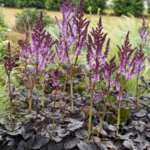
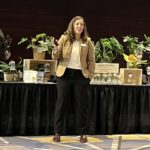




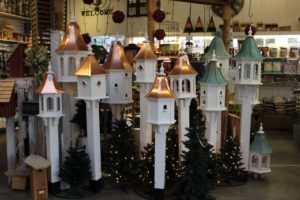
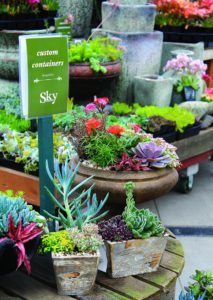

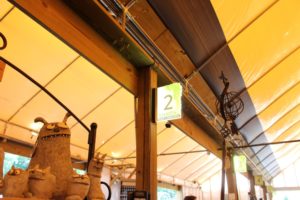
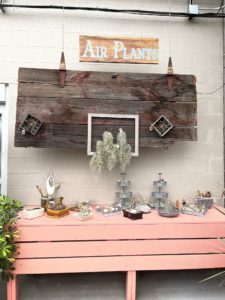
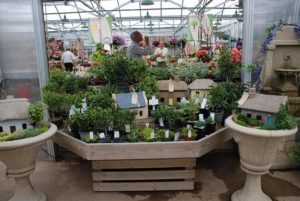
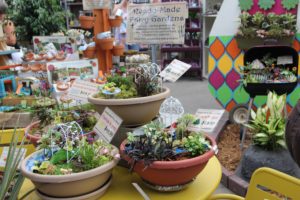
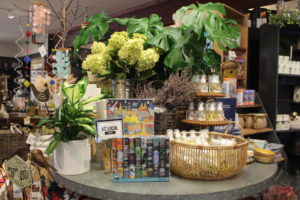

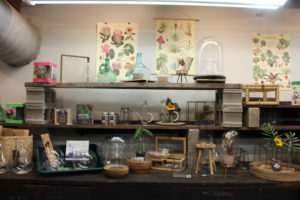
 Videos
Videos





